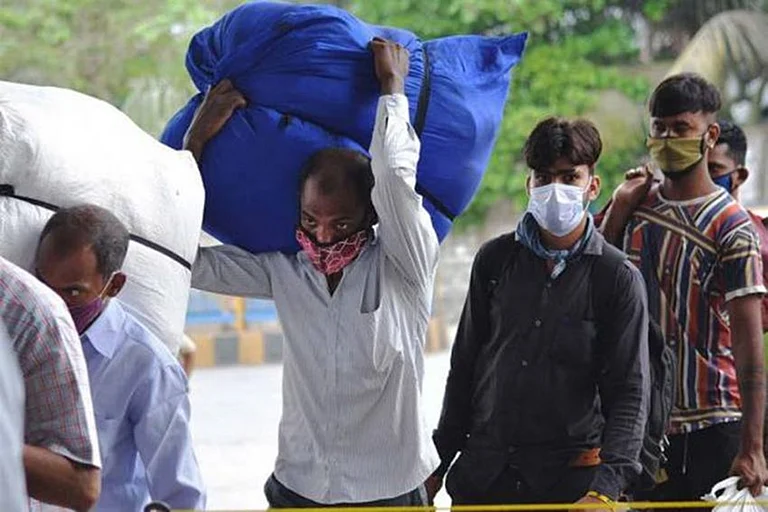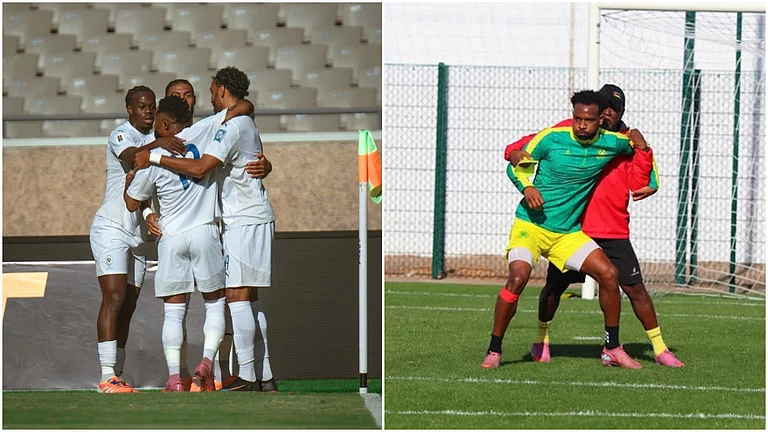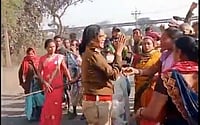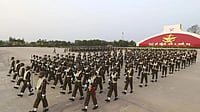THIS is a battle of body counts. In the dead zone called central Bihar, massacre and mayhem have become a routine exercise where all that matters is the number of casualties. Last week, the ongoing war of attrition between the Ranvir Sena, the upper-caste landlord army, and various ultra-Naxal outfits snuffed out 12 more lives in the village of Sindani, Gaya district. Or chalked up 12 more points, depending on your perspective.
The Sindani carnage was just another example of the chain-reaction slaughter that has become the pattern. Barely a month ago, 34 upper-caste villagers were butchered by the armed squads of the Maoist Communist Centre (MCC) in Senari in Jehanabad district. The Ranvir Sena went on record swearing that the blood spilt in Senari would be paid for by a hundred lives. Since the MCC is a Yadav-dominated organisation, the targets this time round would be Yadavs, not Dalits. They issued a hit-list of villages.
In Sindani, villagers say that a local paper had published the Sena hit-list just a few days before the assault' Sindani featured in the list. The state government claims it had deployed over 50 companies of the central forces in trouble-prone 'sensitive' areas. But the Sena was able to make an accurate strike, at a target they had helpfully identified, despite the state's efforts.
Ramjatan Yadav, one of the survivors, says that the massacre would have been on a much larger, unprecedented scale had the village not been on the alert. Eyewitnesses recount that late on that Thursday night, at around 2.30 am, those on watch spotted movement from the north and the south. Two groups' about a hundred Sena men in all' armed and carrying torches were heading towards the village. The villagers were roused from their beds, and the police patrol at the nearby Panki police station was informed . That vigilant bit forced the Sena's men to retreat ' though not before they'd gunned down 12 people, including thre e women and a nine-year-old girl. 'Though they had targeted Yadavs, the Sena could only claim the lives of seven Yadavs'the rest of the victims are Dalits,' says Naresh Yadav, another villager who escaped with his life.
It was a far cry from the hundred lives they'd promised to claim; and the Sena also faced questions about the time-lag between the Senari killings and this act of reprisal. Sena sources accept that there was a rift in the organisation in the aftermath of Senari. Because the Yadav-dominated MCC was behind those killings, one faction of the Sena wanted to attack a Yadav vil-lage, following the time-honoured principle of an eye for an eye. Another faction, led by Sena chief Barmeshwar Singh, argued that they should stick to targeting Dalit villages as on previous occasions. Sources ascribe Barmeshwar 's stand to political concerns: the Sena chief, close to the powers-that-be, was reluctant to anger his political master by attacking the Yadav community. But the urge to avenge Senari prevailed. Asked about their low strike rate at Sindani, a source within the Sena admitted: 'It was a strategic failure on our part.'
Once again, the district administration finds itself between a rock and a hard place. Though state director-general of police T.P. Sinha accepted the role of Sena men in the Sindani slaughter, he also stressed that there had been no animosity between the villagers on the lines of the Sena-Naxal war. 'The villagers were living in harmony but like other previously targeted villages of central Bihar, Sindani too has become a scapegoat,' he says.The police has intensified its combing operation but haven't made a single arrest yet.
Acknowledging the police failure, chief minister Rabri Devi said, 'Police ke dhilai ke kaaran yeh sab hua hai (Police slackness is the reason for this carnage).' RJD chief Laloo Prasad Yadav put his hectic political activity in New Delhi on hold and dashed to Patna for a day: but he merely repeated the usual statement that the per-petrators would not be spare d . In unison, the Opposition demanded chief minister Rabri Devi's resignation over the issue. 'How many massacres does this government want to see'' asked BJP leader Sushil Kumar Modi, speaking to Outlook. He demanded that Rabri Devi should own moral responsibility for the slaughter and resign .
Meanwhile, the inhabitants of central Bihar are waiting. Not for an increasingly elusive justice, but for the massacre that will surely follow. A spate of attacks and counter- attacks followed the Sena's retreat from Sindani, forming what most feel is just the prelude to a familiar scene. The wails of mourning women, the belated police presence as Bihar takes second billing to Kosovo again. And as the body count goes a notch higher in this brutal numbers game.


























